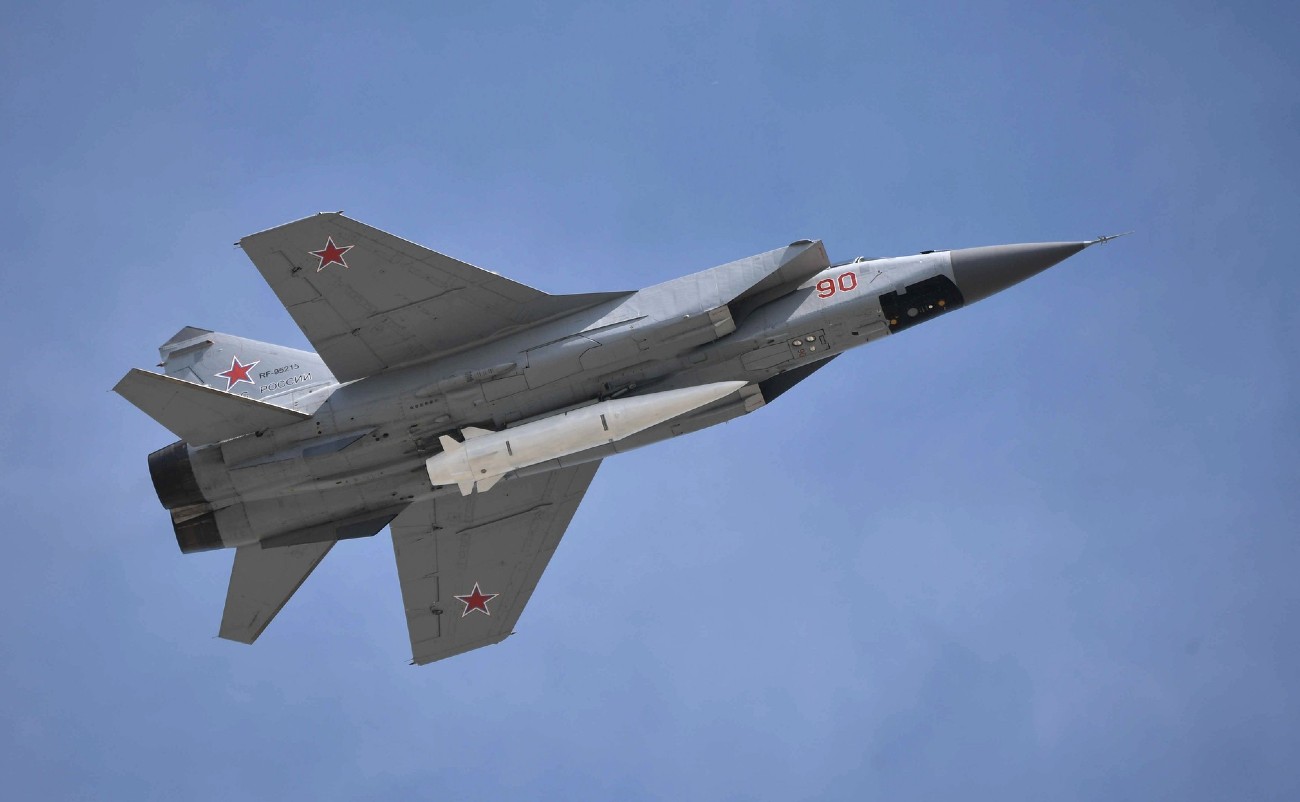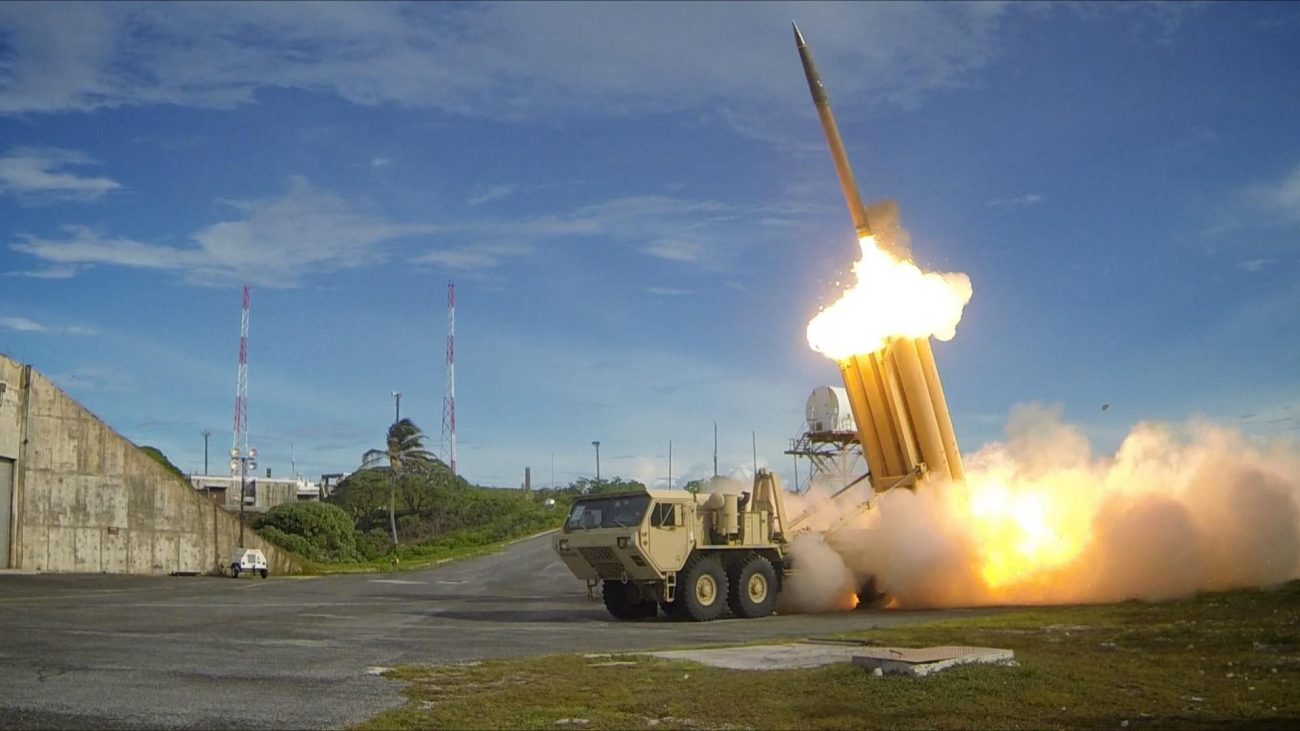The legend of the Russian hypersonic long-range Kh-47 Kinzhal missile or ‘Dagger’ has long evoked fear and admiration among the country’s adversaries. The fear factor is matched by the surprise and jubilation that followed the alleged downing of the Kinzhal by the recently supplied Patriot air defense system.
Reserved To Obliterate ‘Significant Targets,’ Russia Hits Ukraine With ‘Kitchen Missile’ Causing Massive Damage
Fired by MiG-31, the Kinzhal could reach speeds greater than Mach 10 and travel distances in the range of 1,500 to 2,000 kilometers while carrying a conventional or nuclear payload.
Experts found the designation of the Kinzhal missile as a ‘hypersonic’ missile “misleading,” as almost all ballistic missiles attain hypersonic speeds at some point during their flight. But nobody doubted its potency.
The Kinzhal missile, with NATO name “Killjoy,” is so fast that the air pressure in front of the weapon forms a plasma cloud as it moves, absorbing radio waves. This makes the hypersonic weapons very hard to catch on radar systems.
Also, Kinzhal can be maneuvered to the intended target, unlike other hypersonic missiles. That is why they are already near their target when ground-based radar systems spot them. The Kinzhals can be launched from MiG-31K fighter jets, giving it the advantage of being launched from any direction.
On the night of May 4, the Patriot anti-aircraft missile system shot down a Russian Kinzhal missile fired from a MiG-31K over the Kyiv region.
“A hypersonic missile, a ‘super weapon’ that Putin has been boasting about for many years. He showed cartoons to the whole world and said that ‘we can overcome any air defense system,’ but no.
“It turned out that the Patriots could shoot down Kinzhals. So goodbye, invincible weapon, I would say so,” a Ukrainian military expert Oleg Zhdanov said of the direct clash between the Patriot air defense system and Kinzhal missile.
Ukraine had received at least two Patriot systems, one from the United States and one from Germany, to enhance its air defenses, which had previously been unable to intercept more modern Russian missiles such as the Kinzhal.

The Patriot is also the most expensive single weapon system that the US has supplied to Ukraine at a total cost of about US$1.1 billion: US$400 million for the system and US$690 million for the missiles. Ukraine lacked any credible air defense for a year, and only in April did the first Patriot systems arrive in the war-struck country.
Zhdanov’s elation is not shared by the members of Ukrainian forces, who are more cautious in their assessment of the new development. The spokesperson of the Air Force of Ukraine, Yuriy Ihnat, said on national television:
“There are few weapons in the Ukrainian arsenal capable of shooting down the Russian Kh-47 Kinzhal missile. The Patriot has never worked with such a type of target as the X-47 (an Unmanned Combat Aerial Vehicle). Therefore, it is too early to rejoice.” He also added that Ukraine does not have enough weapons to protect large cities from the “Dagger.”
Experts Speak
Jeffrey Lewis, the founding publisher of ArmsControlWonk, the first blog on arms control, disarmament, and non-proliferation, has been skeptical about the development. He told the EurAsian Times: “I am not sure Ukraine actually did intercept a Kinzhal and, statistically, one intercept doesn’t really tell us all that much.”
He added: “To be clear, a PAC-3 ‘might’ have intercepted a Kinzhal but a single hit (or miss) doesn’t provide a statistical basis to assess whether defenses are a cost-effective solution to the problem of Russia’s extremely heavy use of ballistic and cruise missiles.”
Talking about the investment returns on Patriots, retired General Mark Hertling, a former US Army-Europe commander, said that it would not be prudent to use the costly rounds from any Patriot system missile to shoot down every missile Russia launches at Ukraine.
“This is not a system that is going to catch up to smaller drones or ballistic missiles,” he said. “Can it do that? Very. But when you’re talking about taking down a US$20,000 drone, or a US$100,000 Russian-bought ballistic missile, with a US$3-5 million rocket, that doesn’t give you much of a return on investment. What it can do is free up low- and mid-range systems to pursue such targets,” Hertling was quoted in the International Military.
A recently retired Indian Air Force (IAF) personnel familiar with such systems told EurAsian Times: “Patriot Air Defense Systems cannot be omnipresent. They managed to hit one Kinzhal. But in air-launched missiles, the point of origin cannot be predicted, thus making it difficult to intercept. They can only be taken on during the coast or terminal phase, which means that the missile is already closer to the target.”
The “Daggers” were used against Ukraine for the first time in March 2022. Russia launched six hypersonic missiles in one of the biggest aerial strikes on Ukraine to tilt the stalemate in the ground war.
US Air Force General Tod Wolters described the use of the missile as an attempt “to put fear into the hearts” of Ukrainians rather than hitting military targets.
But Russia, buoyed by the success of the strike, increased the production of “Daggers.” The general director of the Rostec state corporation, Sergei Chemezov, said that Rostec is producing “colossal” volumes of such products.
The major success of these precision strikes has been when the Kinzhals reportedly struck an underground “NATO command center” in March that resulted in “dozens” of Western officers and military personnel killed in the missile attack.

Putin’s New Missile: ‘Old Wine In New Bottle’
Russian President Vladimir Putin introduced the Kinzhal missiles to the world in 2018.
Talking about the upper hand Russia had over the existing and prospective Western air defense systems, Putin said, “The missile flying at a hypersonic speed, ten times faster than the speed of sound, can also maneuver at all phases of its flight trajectory, which also allows it to overcome all existing and, I think, prospective anti-aircraft and anti-missile defense systems, delivering nuclear and conventional warheads to a range of over 2,000 kilometers.”
The grand pronouncements did little to impress Western analysts. Jeffrey Lewis was quoted by Popular Mechanics as saying that “Kinzhal is nothing more than an air-launched ballistic missile.”
The major doubts about the claims about the missile stemmed from its lineage. It is said to be an air-launched version of the ground-launched Iskander ballistic missile with minor modifications.
The Iskander system has been in service since 2006, transported and launched from a giant 8×8 high-mobility military truck.
A missile’s air-launch variant provides it with greater range, deployability, and flexibility. Russia has developed missiles to counter the US theater missile defenses, such as THAAD (Terminal High Altitude Area Defense).

Following the launch, the Kinzhal rapidly accelerates to Mach 4 (4,900 km/h) and may reach speeds up to Mach 10 (12,350 km/hr).
This speed, in combination with the missile’s erratic flight trajectory and high maneuverability, could complicate interception. An aircraft-launched missile has unpredictability regarding launch directions that can strain sectored (non-360 degree) radars, such as those of the Patriot system.
The Center for International and Strategic Studies report in 2021 called the claims about Kinzhal’s invulnerability to missile defense systems somewhat “exaggerated.”
The report also highlighted how the ground-launched Iskander was also vulnerable to missile defense systems during the 2020 Nagorno-Karabakh war, during which Azerbaijani forces had succeeded in intercepting an Armenian Iskander.
Besides Kinzhal, Moscow has claimed to have two other types of hypersonic missile systems. One is the Avangard hypersonic glide vehicle, which can achieve speed as high as Mach 27, and the other is the Zircon anti-ship missile.
So far, the country has not used these weapons in the ongoing war.
Putin’s Missiles Vs. Ukrainian Air Defense
The Western experts have also drawn parallels between the successful use of cruise missiles in Operation Desert Storm in Iraq and Russia’s long-range strike campaign of air and missile attacks that have “fallen short of producing the strategic effects necessary to achieve a decisive victory.”
Ian Williams of the Center for Strategic and International Studies, in his report “Putin’s Missile War – Russia’s Strike Campaign in Ukraine,” says: “Key drivers of this failure have been the Ukrainian military’s extensive use of dispersion, mobility, and deception and the comparative slowness of Russia’s over-the-horizon targeting cycle.”
What has made the interception of the Kinzhal missile possible isn’t just the Patriot air defense system but also Russia’s bungling of the chance to gain air superiority at the onset of the war, giving the Ukrainian forces time to regroup, rearm and counter Russia’s offenses.
- Ritu Sharma has been a journalist for over a decade, writing on defense, foreign affairs, and nuclear technology.
- She can be reached at ritu.sharma (at) mail.com




